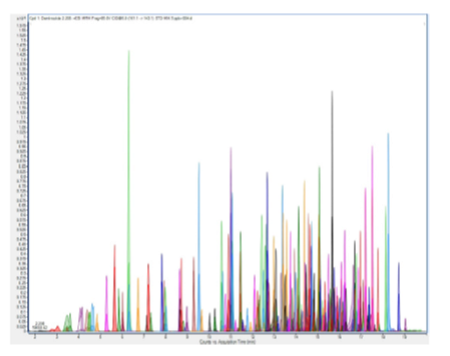


Indian Journal of Science and Technology
Year: 2022, Volume: 15, Issue: 23, Pages: 1112-1123
Original Article
J Prasanth1, M V Vincy2*, R Brilliant3
1Department of Environmental Sciences, Bharathiar University, Coimbatore, Tamil Nadu, India
2Department of Microbiology & Biochemistry, St. Berchmans College, Changanacherry, Kerala, India
3Department of Environmental Sciences, St. John’s College, Anchal, Kerala, India
*Corresponding Author
Email: [email protected]
Received Date:15 January 2022, Accepted Date:24 April 2022, Published Date:22 June 2022
Objectives: To quantify a broad spectrum of pesticides of various chemical classes such as neonicotinoids, organochlorines, organophosphates, triazoles, carbamates, dicarboximides, and dinitroaniline in honey at ppb level using Liquid chromatography-tandem mass spectroscopy (LC-MS/MS) and Gas chromatography-tandem mass spectroscopy (GC-MS/MS). Methods: QuECh- ERS based sample preparation followed by the Multiple Reaction Monitoring (MRM) method was developed for quantitation of pesticides in honey. This method was validated as per SANTE/12682/2019 guidelines. Findings: Acceptable values were obtained for matrix-matched linearity, the limit of detection (2 ng/g) and limit of quantification (5 ng/g), and an intraday precision of less than 7%. A recovery of 70-120% was obtained for more than 85% of the compounds. However, there were compounds such as Alanycarb, Propiconazole, Benzoximate, etc. showed recovery values between 60-70%, however, these values were found consistent among multiple batches. Twelve honey samples were analyzed employing the developed method, out of which 8 samples were sourced from apiculture farms located in five districts of Kerala state, India. Rest four samples were commercial honey brands in India. Many of the pesticide residues were identified below the limit of quantitation. Some of the pesticides were quantified above the LOQ levels in samples, however, Propoxur and deltamethrin were the only pesticides found above the maximum residue limit as per the India residue monitoring program to export honey samples to EU countries. Novelty: Studies on the presence of pesticide residues in Kerala honey samples have not yet been published. The proposed method was able to detect an extensive range of pesticides with remarkably high sensitivity, selectivity, and precision.
Keywords: Pesticide residues; Quantitation; Indian honey; LCMS/MS; GCMS/MS
© 2022 Prasanth et al. This is an open-access article distributed under the terms of the Creative Commons Attribution License, which permits unrestricted use, distribution, and reproduction in any medium, provided the original author and source are credited.
Published By Indian Society for Education and Environment (iSee)
Subscribe now for latest articles and news.